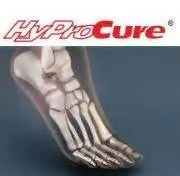If you’ve recently exposed extremities to the harsh cold elements then you may be dealing with itching, swelling skin on the fingers and toes. This itchy.jpg) manifestation is known as chilblains, and it’s a common bodily response to cold (particularly in regions that experience colder, damper weather).
manifestation is known as chilblains, and it’s a common bodily response to cold (particularly in regions that experience colder, damper weather).
Chilblains often show up in just a few hours after being exposed to the cold. Skin may even start to turn red or blue. The skin usually burns or itches. You may find that the minute you walk into the warmth or heat that these sensations get worse. If you have a really bad case of chilblains then the skin may even crack open or blister.
While scratching the skin may feel good at the moment it’s really important that you do not scratch the skin, as the skin is more susceptible to cracking or breaking open and becoming infected. There are some people who are more at risk for developing chilblains such as:
- Heredity
- Living in areas with cold weather
- Being underweight
- Having poor circulation
- Certain immune conditions (e.g. lupus)
- Smoking
While this condition may sound rather concerning or serious, most people won’t actually need to visit a podiatry or specialist for their chilblains. In most cases, this condition will clear up within a few weeks and shouldn’t cause any complications. However, there are some situations that may warrant visiting a podiatrist. If your symptoms don’t go away within a few weeks, or if the itching and swelling are severe, then it’s time to seek medical attention as soon as possible. Medication may be necessary to improve circulation in your feet.
It’s also important to be aware of symptoms of an infection such as a high fever, malaise, swollen lymph nodes and pus in the affected toes. If you notice any of these symptoms call your foot doctor right away.
Otherwise, you can typically manage your symptoms on your own from the comfort of your own home. Look for lotions and creams that may relieve itching (if you aren’t sure, ask your podiatrist for recommendations). You can also prevent or reduce your chances of developing chilblains by avoiding the cold as much as possible, providing your feet with ample protection or taking measures to improve poor circulation.
While it might seem tempting to immediately place feet into hot water or near a fireplace after being in the cold, such extreme temperature changes are what can cause this problem to occur. Warming the areas up gradually is always your safest bet. If in doubt, talk to your podiatrist about ways to protect yourself.













